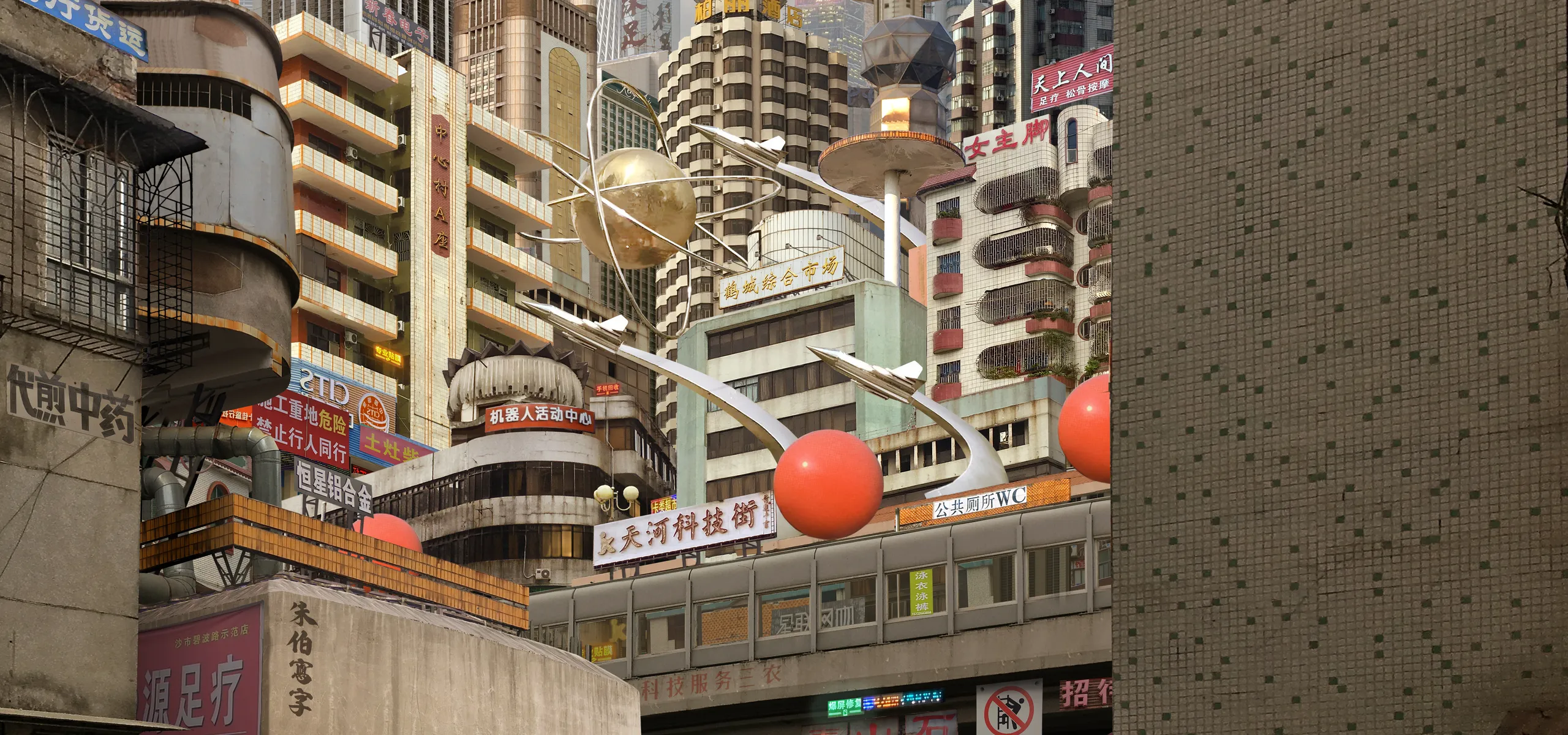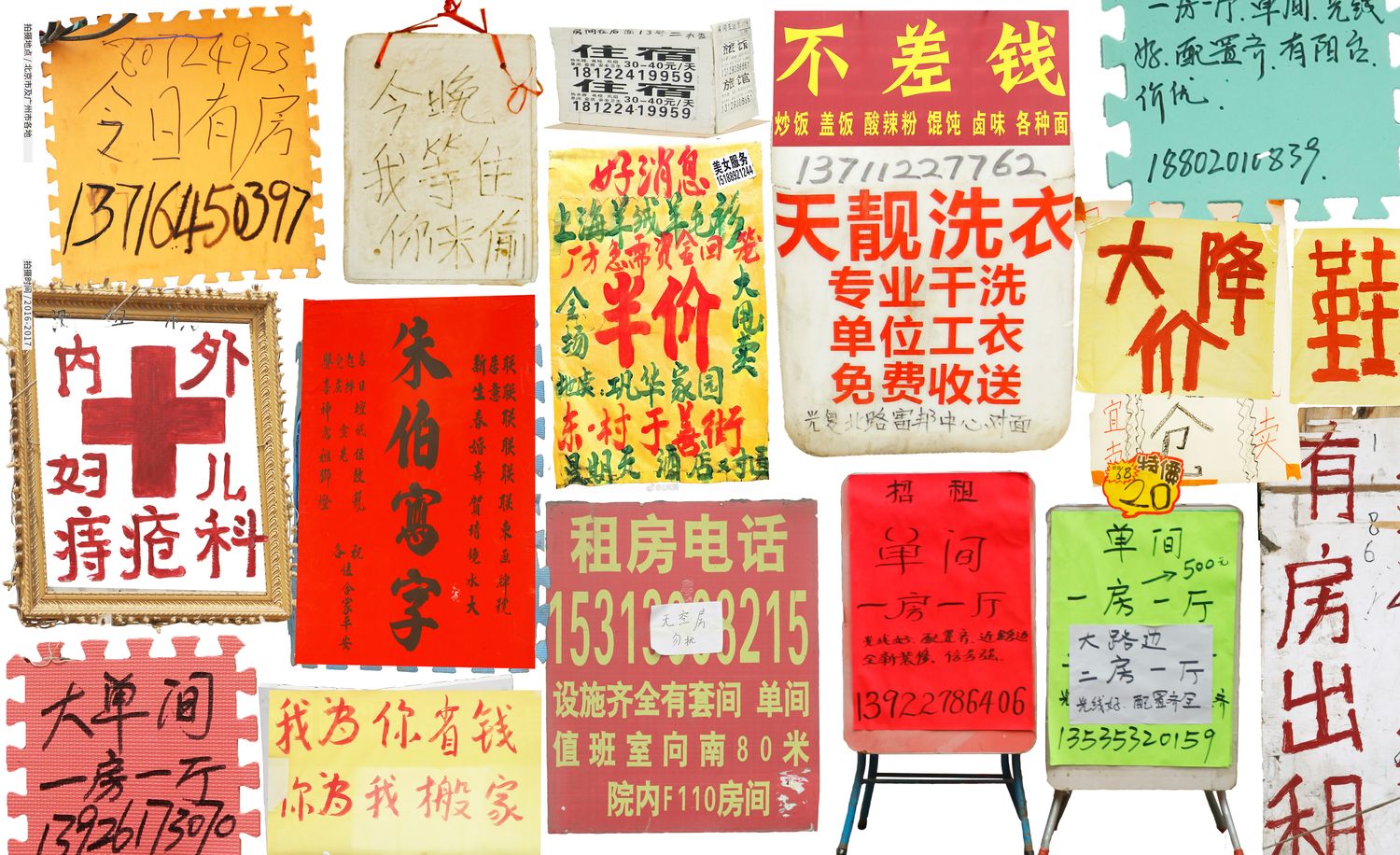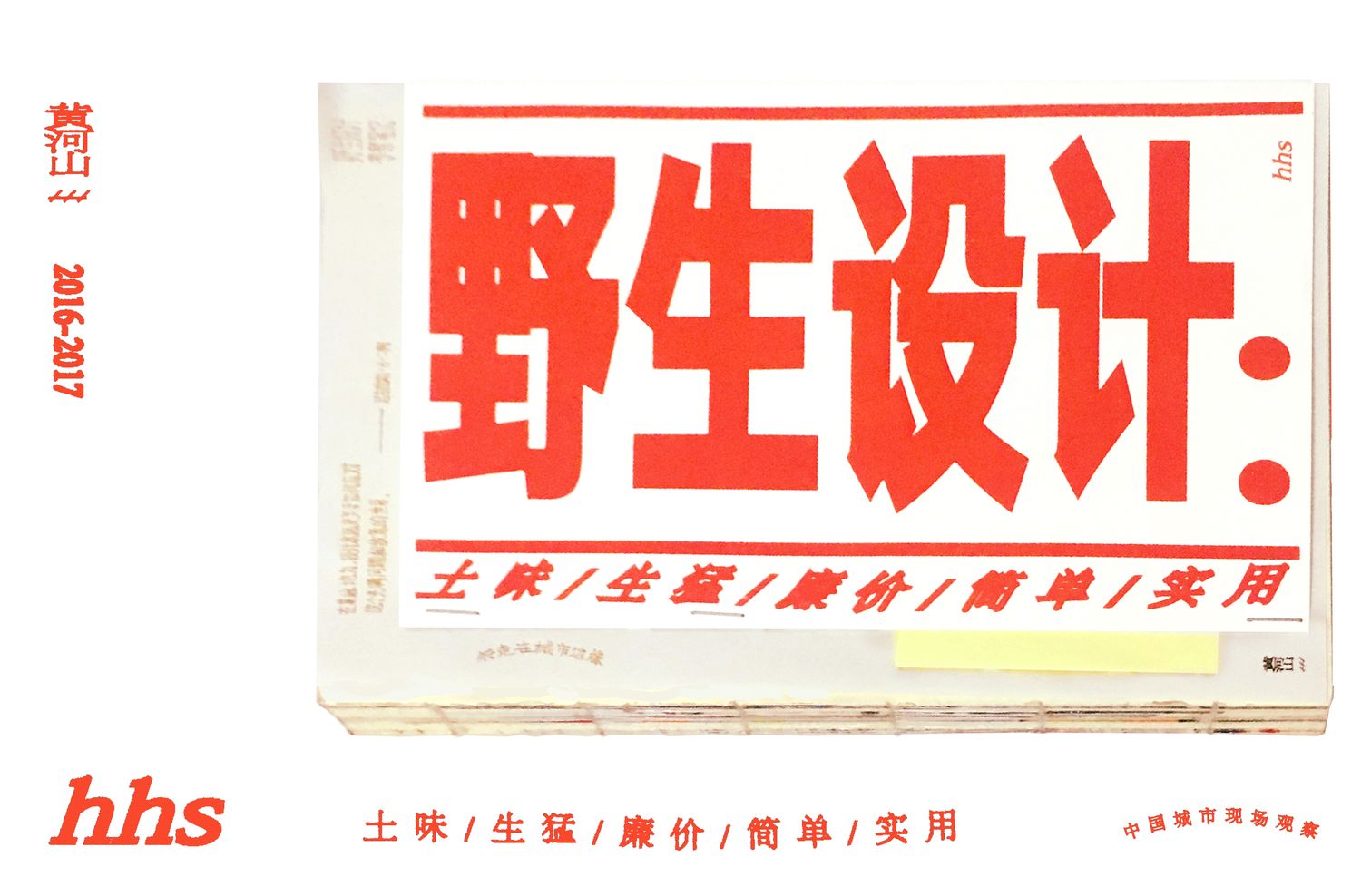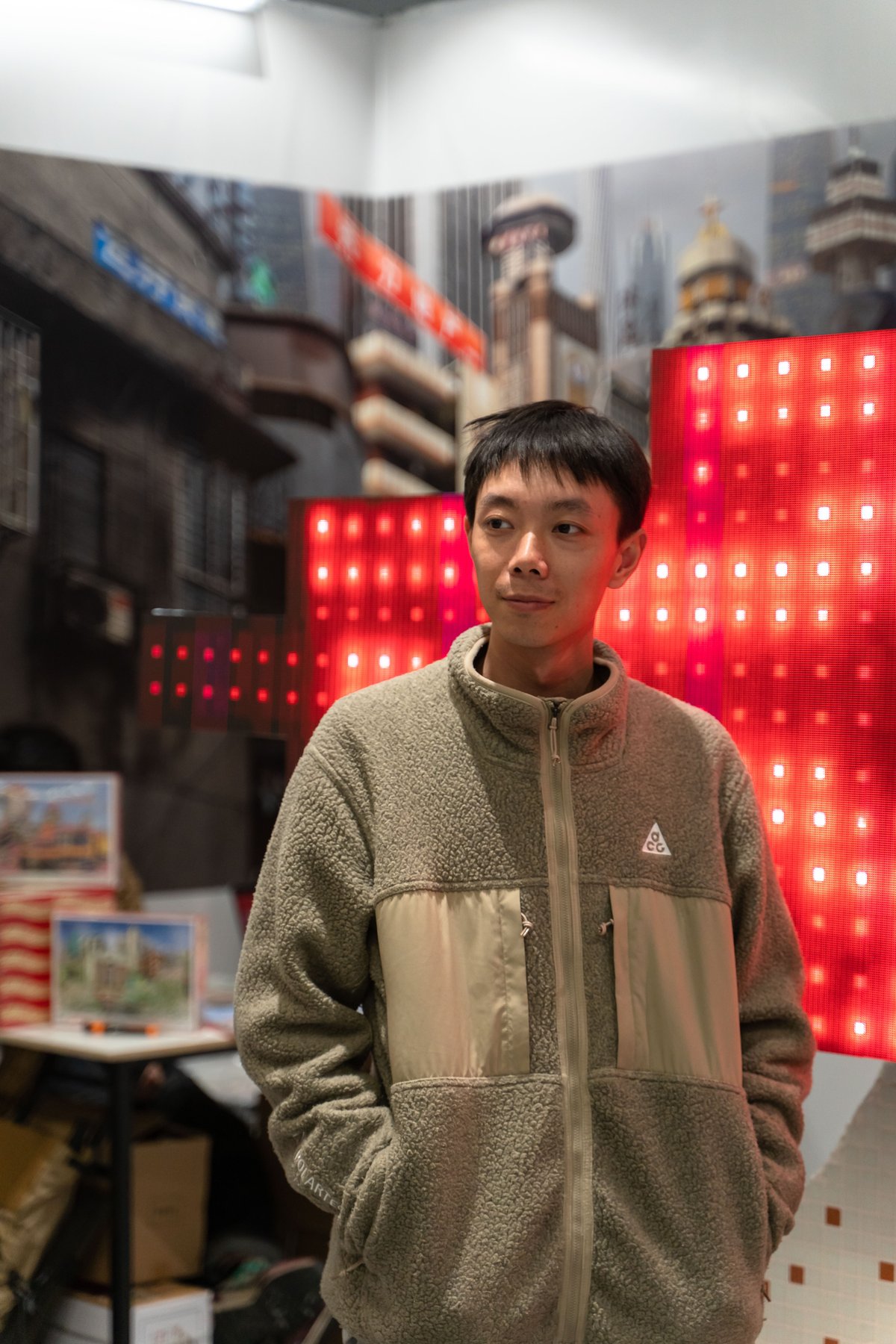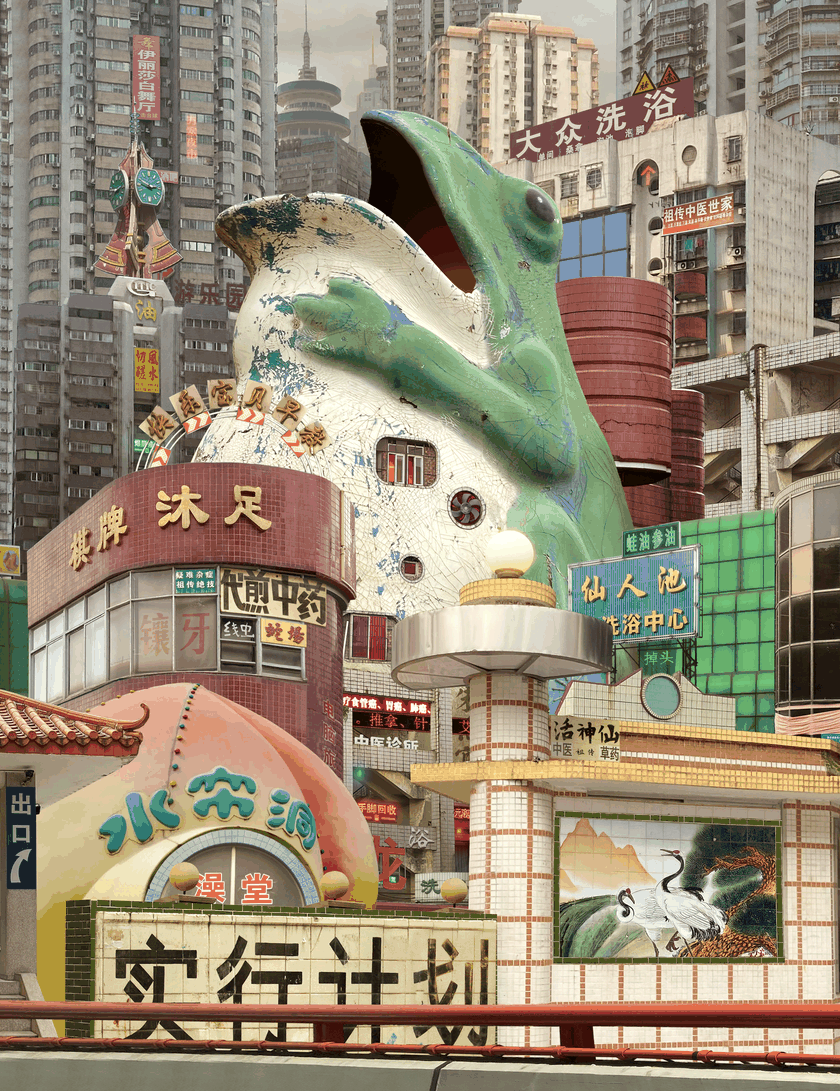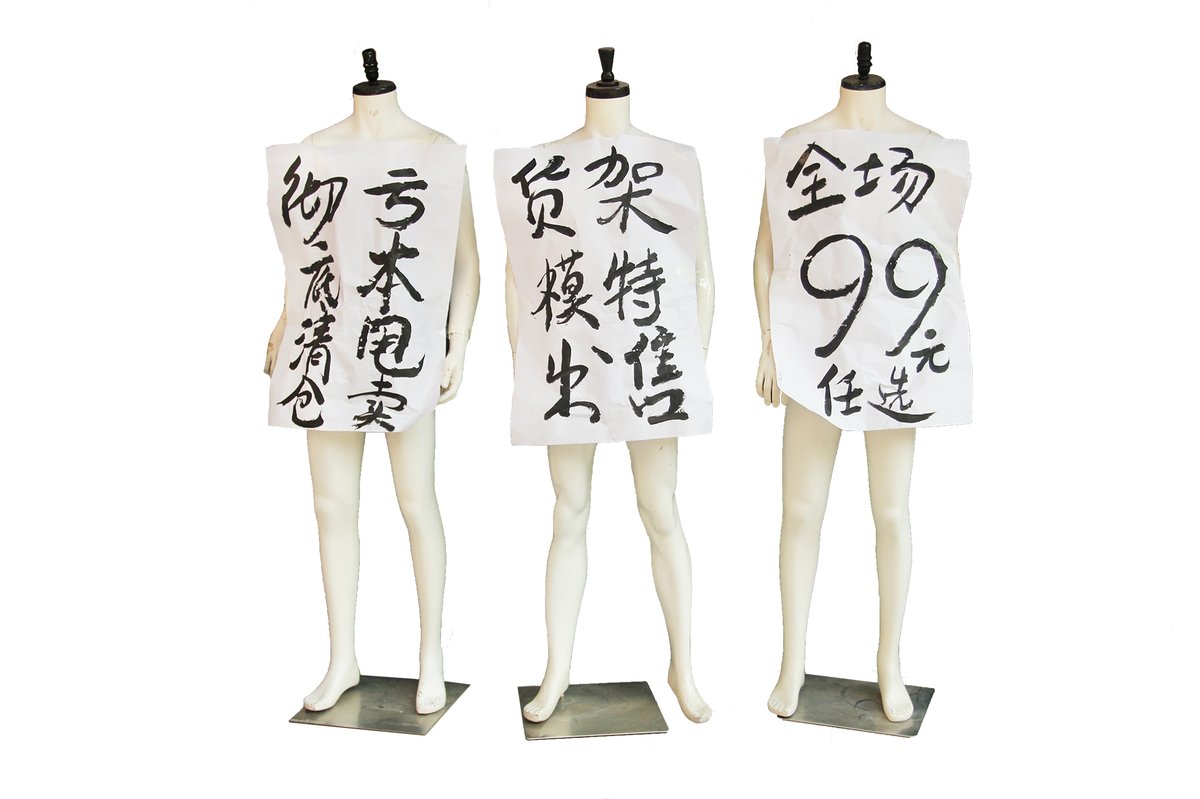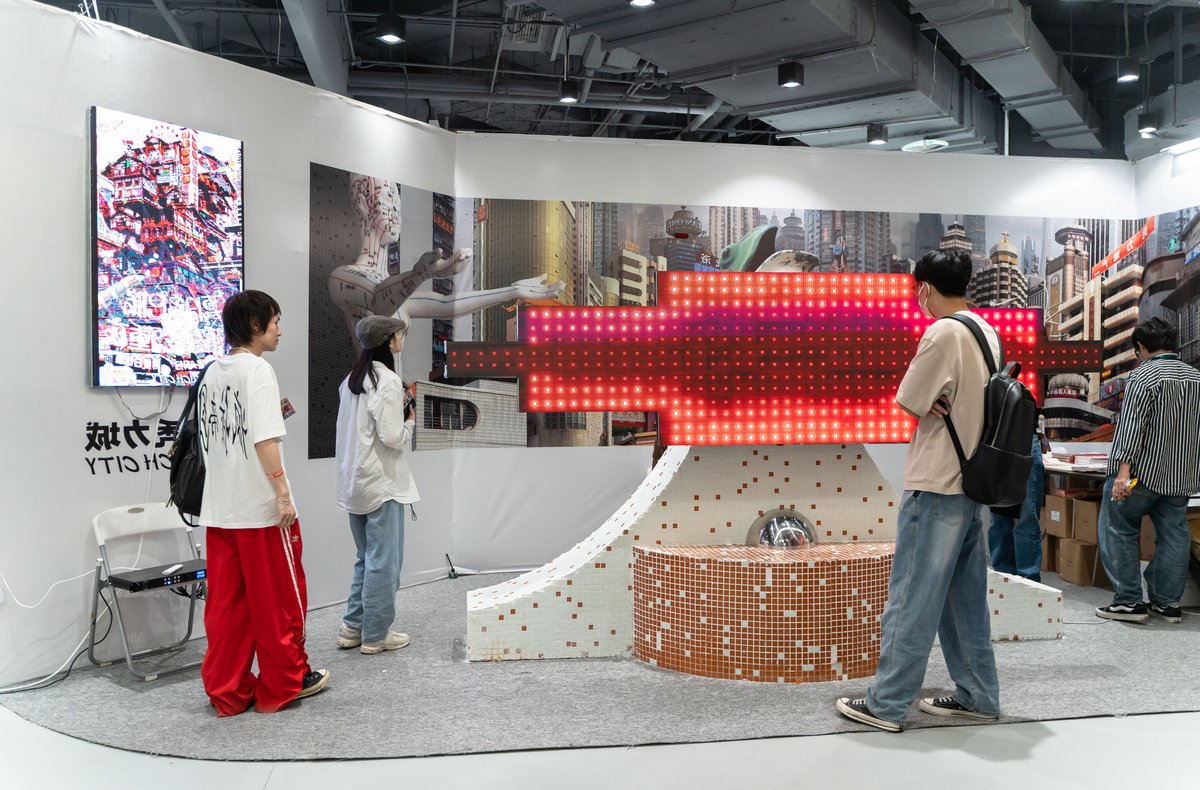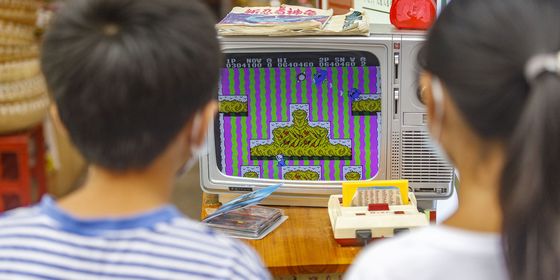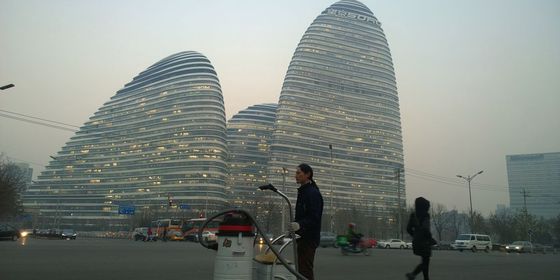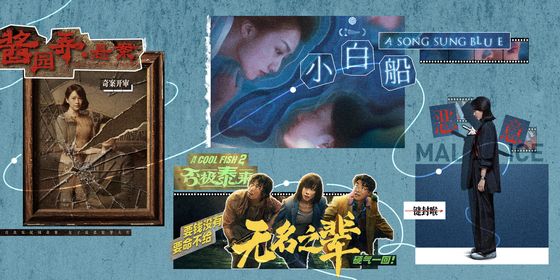Artist Huang Heshan’s cyberpunk metropolis celebrates and critiques modern urban life, weaving together rich human connections with the looming dangers of modernization
Somewhere high above bustling streets, a small balcony is wedged between two towering high-rises. “Peeing prohibited,” reads a large sign in Chinese, surely appreciated by the pedestrians below. A sprawling cityscape unfolds—a mix of old, weathered structures and futuristic skyscrapers. Shiny surfaces and endless facades adorned with neon lights reflect the relentless pace of a city that feels both familiar and alien.
Welcome to the world of Beijing-based artist Huang Heshan. This cyberpunk metropolis, called “Too Rich City (秃力城)” has been “under construction” through a series of typography-heavy multimedia artworks since 2021. Too Rich City’s most recent manifestation is a 13-second video with over 13,000 “likes” on Huang’s Douyin (China’s version of TikTok) where he has 120,000 followers. “Waiting for an open-world video game based on Too Rich City” reads the top-voted comment. But Huang has other plans first.
“I want to try making longer videos now. These are all just around 15 seconds—very short, like animated images,” the 30-year-old tells TWOC inside his booth at the Artphile art market in Beijing in early May, motioning to a screen behind him showcasing Too Rich City visuals. “I want to create longer works with a plot,” he says, referring to the next evolution in his artistic approach—the roots of which can be traced back to his childhood in southern China.
Origins of an urban flaneur
Huang’s childhood in Heshan, Guangdong province, was set against the backdrop of urban-rural amalgamations characteristic of the 1990s in southern China. The landscape, dotted with light industrial factories and bustling with migrant workers, provided fertile ground for his artistic sensibilities. Influenced by the gritty, kinetic energy of his surroundings, Huang developed a keen eye for observing and capturing the organic chaos of these environments.
Huang was the first from his local high school to be admitted to the prestigious Tsinghua University in Beijing, an achievement so rare in Heshan that it was celebrated with banners across major intersections in the city. “I majored in design and…slowly transitioned to more artistic practice,” he tells TWOC about his university education.
His graduation thesis, “Wild Design,” marked his first major attempt to integrate his observations of the urban landscape into his art. For this project, Huang explored the fringes of Beijing, where the city blends into villages, collecting and cataloging the spontaneous design solutions of local residents.
The project showcased a range of improvised creations—from hand-painted signs offering mundane services to ingeniously repurposed objects serving new, unintended functions, including a wooden barbecue restaurant marquee in the shape of the character 串 (meaning “kebab”), or makeshift signposts made with concrete-filled buckets, broomsticks, and cardboard. This exploration was part artistic endeavor, part anthropological study highlighting how urban dwellers adapt to their cramped and often chaotic environments.
Huang’s 2016 graduation exhibition at Tsinghua juxtaposed raw, unrefined design elements with the sleek, polished aesthetics typically celebrated in Chinese academic settings. By using materials like discarded woven bags for his exhibition book covers, Huang underscored the authenticity and immediacy of his subjects. The exhibition gained Huang’s art recognition, and he later presented the project at Yixi, a Chinese TED-like platform, and the Ullens Center for Contemporary Art in Beijing. But Huang had much bigger projects in mind.
Satire of opulence
A few years after graduation, Huang embarked on his most ambitious project yet: Too Rich City. This digital metropolis can be read as a critique of the superficial gloss that urban development often prioritizes over genuine community needs. But Huang primarily sees it as a communal project, an imagined space for people to escape to. “A lot of people tell me in the comment sections that they want to live in Too Rich City. They want to move there and never leave,” he tells TWOC.
Huang involves his friends and fans in the creative process. He has created WeChat groups (dubbed “Construction Teams”) with over 1,000 total members where people post images of buildings they think belong in Too Rich City. Huang regularly uses visual material shared in these groups. “When everyone yearns for and believes in the existence of such a place, that’s when Too Rich City is truly built,” he muses.
The city, with its dense, layered architecture and flashy neon signs, is both a homage and a satire of the cities Huang grew up around. “I see this as a kind of documentary work too,” he says. A sense of urgency drives his archival impulse as these commonplace yet culturally significant structures are increasingly razed in the name of modernization. “A lot of the buildings in Too Rich City will be demolished soon. That’s why Too Rich City is also a sort of Chinese urban documentary.”
Despite the acclaim and the growing popularity of Too Rich City—including selling out a batch of NFT properties at the height of the craze in 2021—Huang remains connected to his roots. He enjoys fishing with locals on the outskirts of Beijing and regularly visits his hometown in Guangdong. His studio in a Beijing hutong is a far cry from the sprawling virtual landscapes he creates, though the space is plastered with images of it, almost like windows into another world.
Here, Huang’s creative process intertwines with the rhythms of daily life.
Empty McDonald’s takeaway bags litter the floor. On the wall, there is an image of Too Rich City’s version of the fast-food chain: It features a whimsical double-M arch and is called “McaldDon’s”—a nod to China’s copycat (or 山寨) culture of the 1990s, where slogans on fashion and other fake products were often misspelled. Huang’s work is a dialogue between the past and the present, the real and the imaginary. It reflects a broader cultural memory of when cities were messier but more visibly alive with diverse human activity.
Money matters
As Huang continues to develop Too Rich City, with plans to expand into longer narrative video works and potentially an interactive game, the costs will inevitably rise, presenting new challenges. China’s market for digital art is small, and there isn’t a large enough network of collectors to sustain his work solely through sales. To support his art, Huang runs a design business out of his hutong studio catering to commercial clients, including the social media platform Xiaohongshu. He employs two graduates who assist with animation, client relations, and other tasks like exhibition planning.
When TWOC visited Huang one Tuesday evening, his team was busy planning an exhibition in Shanghai. “How do I paint the elephant when I get there?” one of his team members asks, pointing to a vista of Too Rich City on the wall which features a large playground slide in the shape of an elephant. Huang plans to craft a wooden version of this slide for the exhibition.
“This elephant image is from my hometown,” Huang explains. “That neighborhood used to have four or five of those slides, but when I last visited, there was only one left.”
The team member then points to a small miniature billboard-like sculpture bearing the words “Too Rich City.” “I also need to pack this up and ship it tomorrow,” he says. Huang and his team have recently expanded their creative practice to include sculpture and installations. “Commercial partners sometimes request physical objects to exhibit, but for now, video art is still my main focus,” Huang says.
Huang’s latest 13-second video, the one with 13,000 “likes” on Douyin, features a more menacing tone than his previous works. As the viewer looks out from that small balcony wedged between the two residential towers out onto the sprawling nighttime cityscape, a giant red LED matrix ominously floats forward, accompanied by a loud bass sound that intensifies as the mysterious flying object approaches. “I’ve recently felt a certain pressure, possibly from the internet, social media, or new technologies and their impact on humanity. This isn’t just a personal issue, I’m talking about major crises that all carbon-based life forms, including humans, are facing. I’ve been feeling this way recently, so I wanted to create something to encapsulate that feeling,” Huang explains.
Too Rich City, in its boundary-defying manifestations, invites viewers to contemplate the complexities of urban life and to imagine alternatives. It’s a place where richness extends beyond economic prosperity to encompass the depth of human interaction and cultural memory. Yet, this richness also comes with its own set of hazards. Huang’s work underscores the potential dangers brought about by the unintended side effects of modernization. In a city that is ”too rich” in every sense, we are reminded that the pursuit of progress often carries hidden costs, and urged to consider what we truly value in a rapidly evolving world.
Additional reporting by Jiayu Zhang (张佳羽)
Too Rich: Wealth and Peril in Huang Heshan’s City Dreamscapes is a story from our issue, “Viral Attractions.” To read the entire issue, become a subscriber and receive the full magazine.





